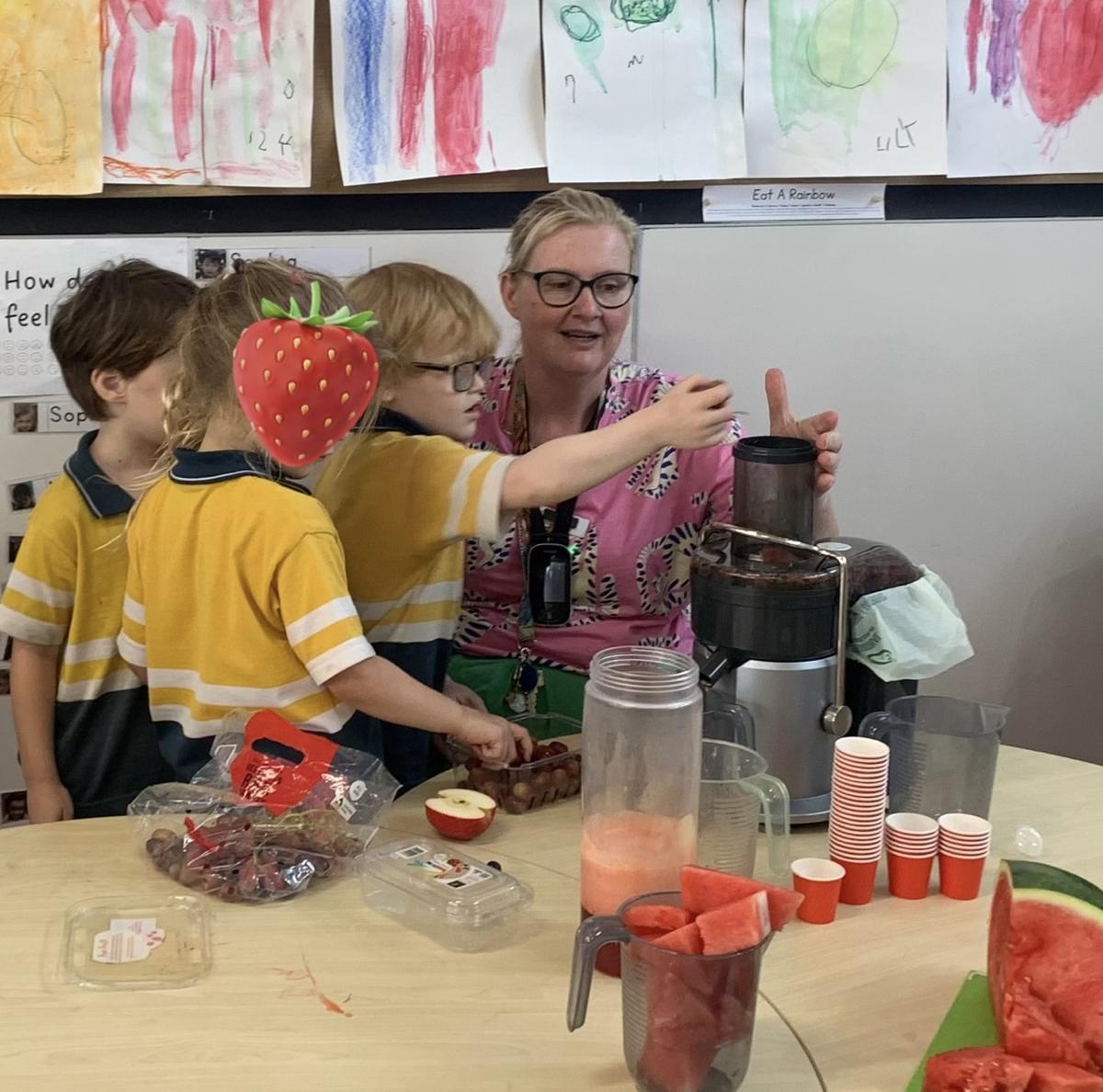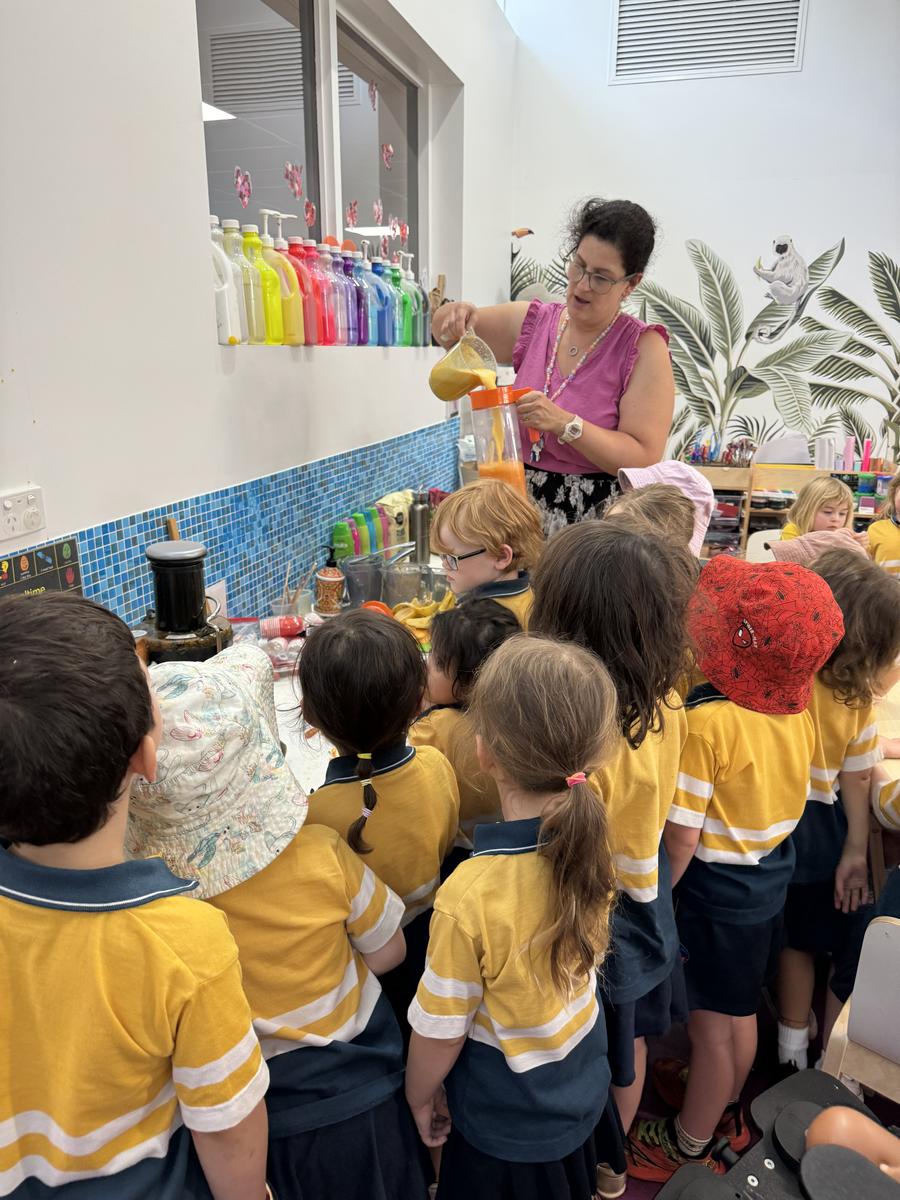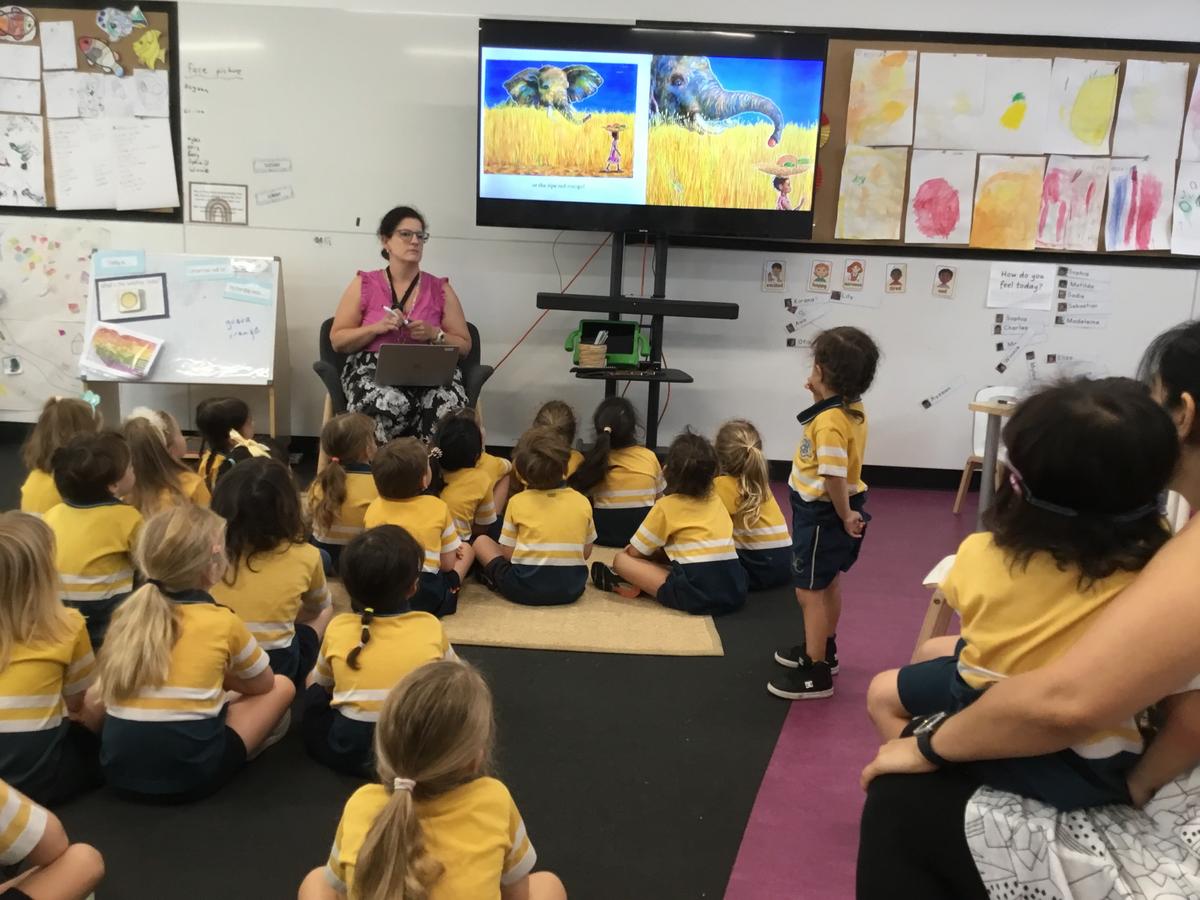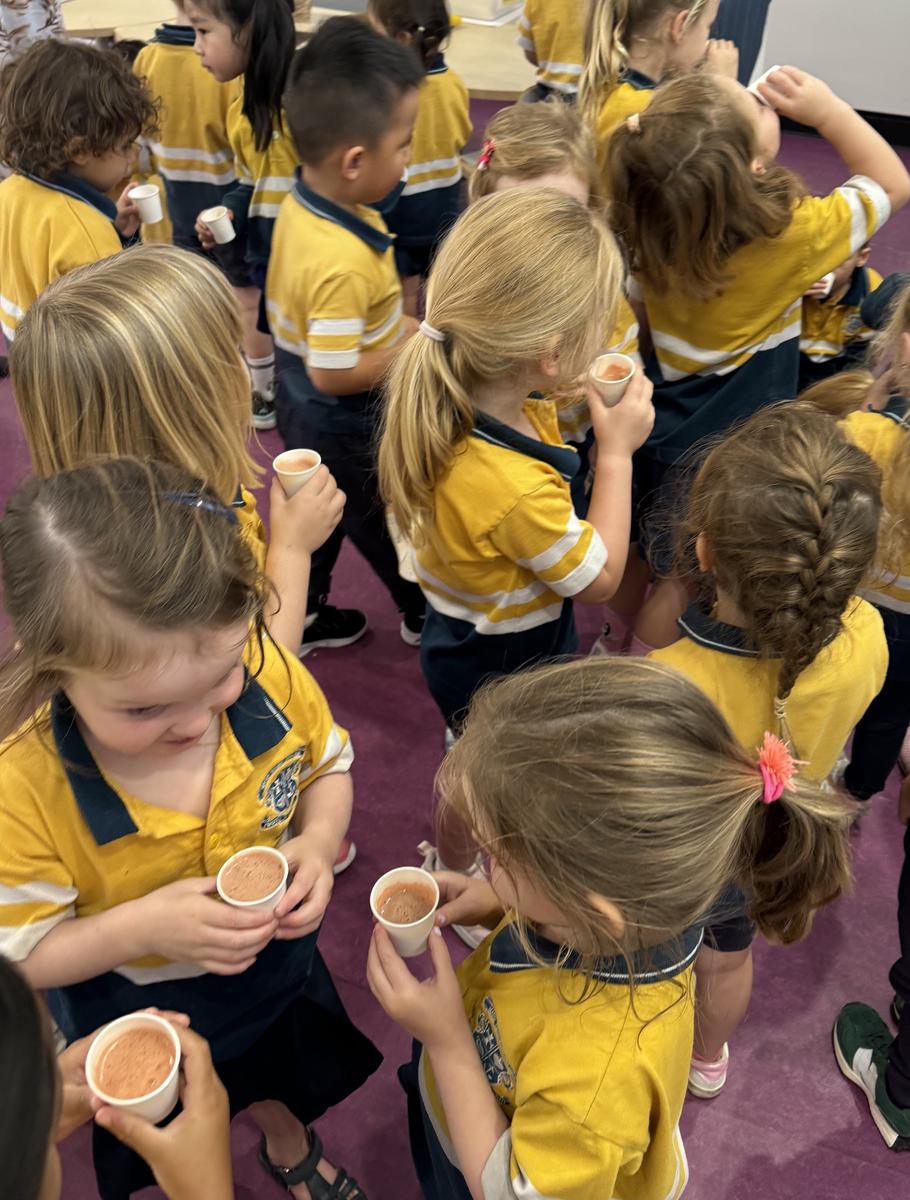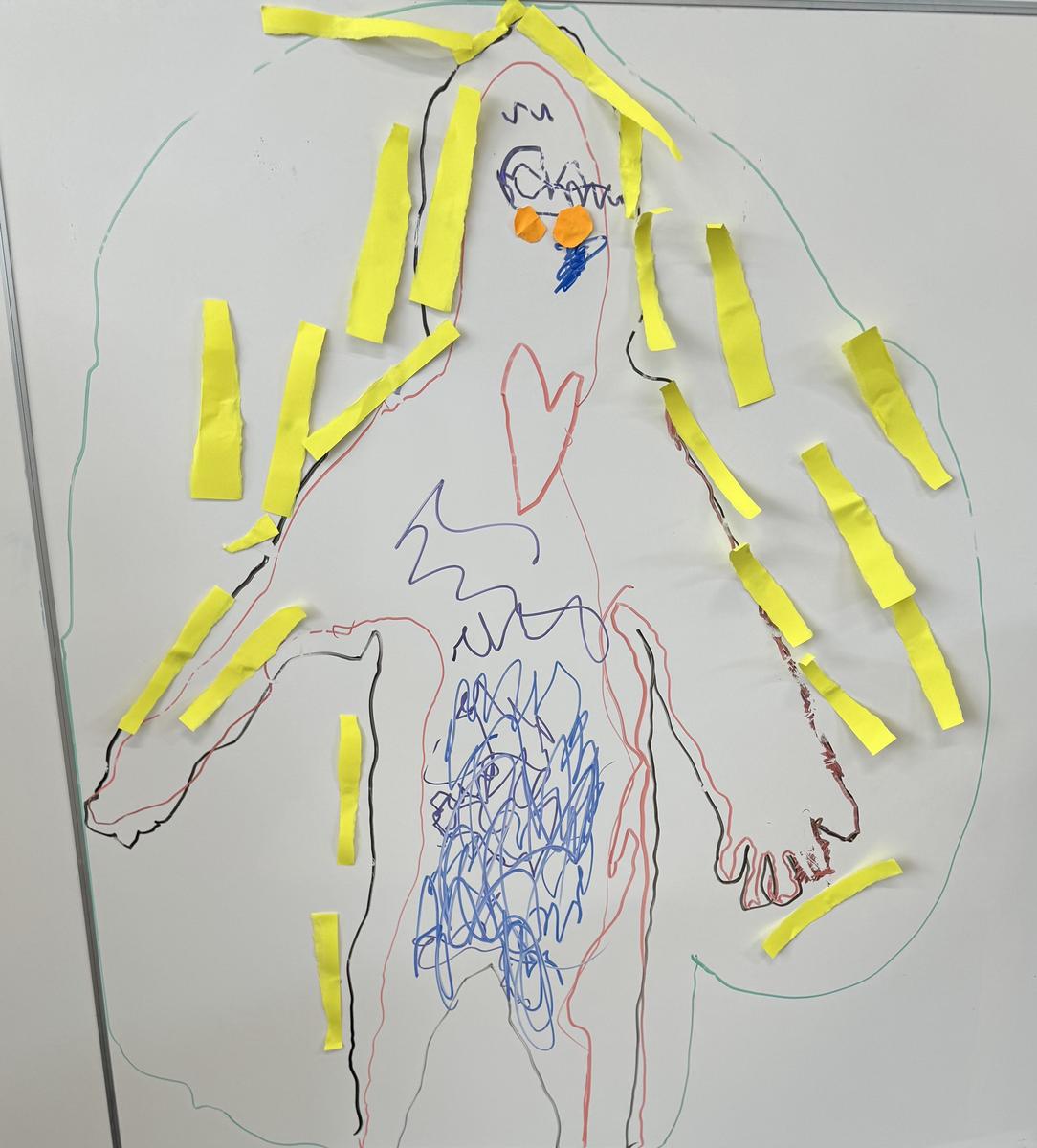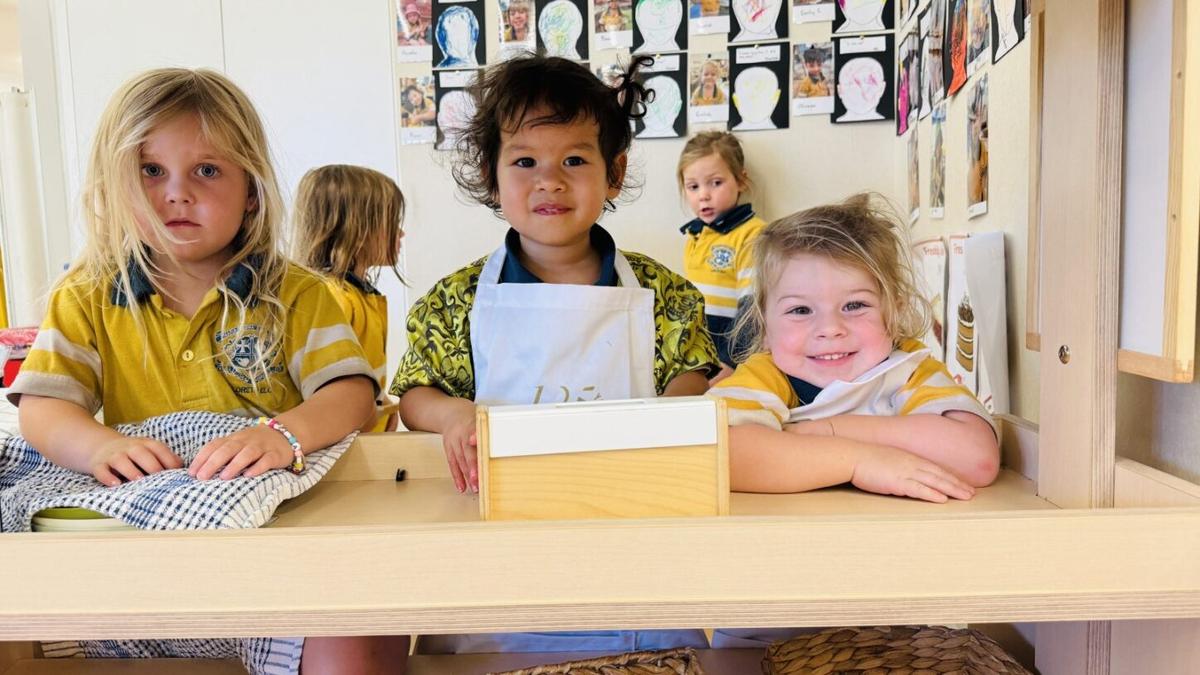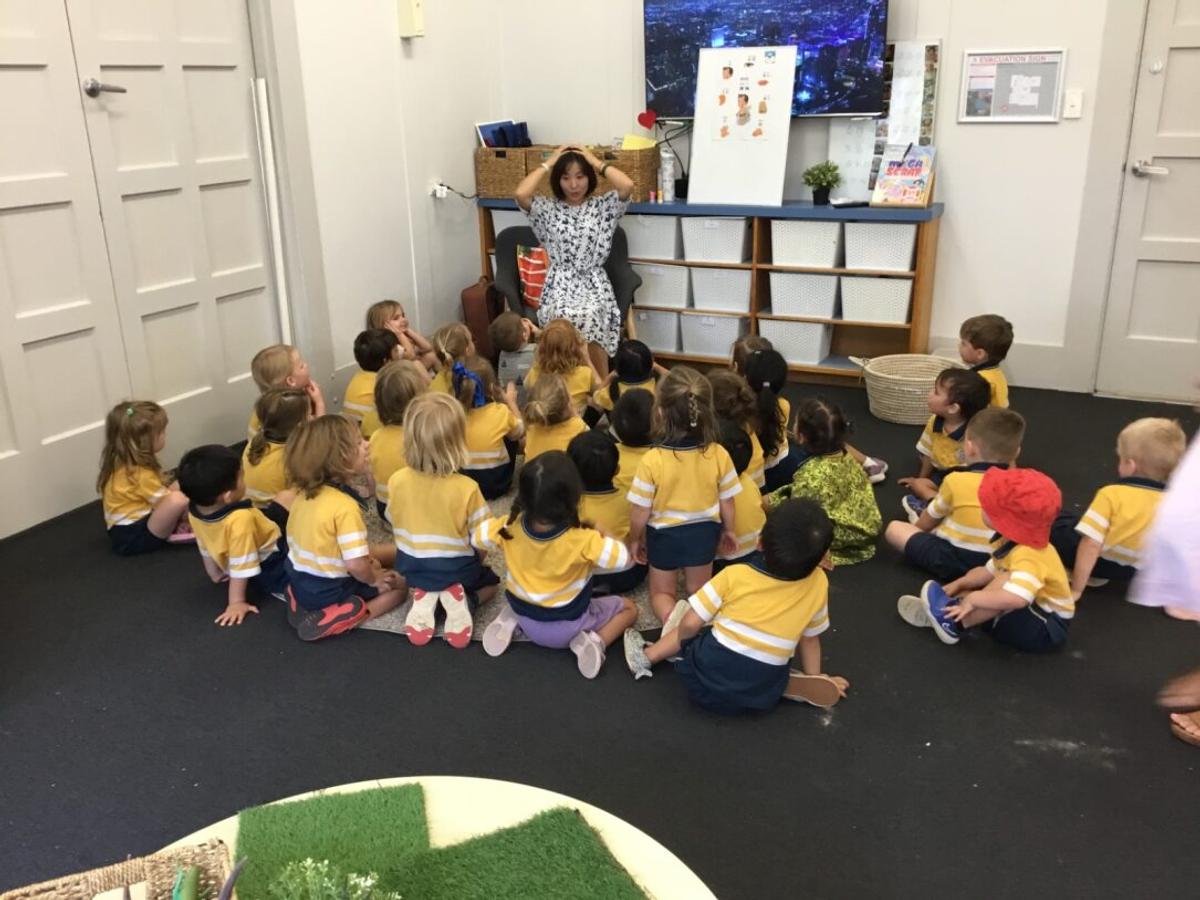Learning Across the ELC

Learning in the Preschool
As part of our inquiry, we have been investigating the similarities, difference and uniqueness of fruits and vegetables, through taste and looking at how specific coloured foods benefit our bodies. Ms Lauder bought in her juicer and together we discussed each food in colour groupings, deciding if we thought it was a fruit or vegetable predicting what colour its juice would be, and how it might alter the colour of the jug of juice. Children noticed while juicing the range of fruits and vegetables, that some were more juicier and that’s why more liquid went into the jug. We discussed that pineapples, apples, oranges and watermelon were the juiciest fruits. We also engaged with a picture book titled 'The Black Book of Colours' that supported children to develop an awareness of vision impairment and what colours might taste, feel, smell and sound like. Each page was black, using varnish finishes to create textural imagery and braille to communicate the colour experience. It's a beautiful and thought-provoking book that promotes inclusivity and sensory awareness. We discussed why colours of vegetables and fruits are important for our health and the children created a body map of the benefits of rainbow foods, adding to it each day with the colour we were focusing on. Red for the blood and heart, Yellow for helping your skin and bones to heal and strengthen, Orange for your eyes, Green to build our immunity and protect us from getting sick, Blue and Purple to strengthen the brain/memory and support digestion, and White/Brown for energy. We read the book Handa's Surprise, where Handa transports seven pieces of delicious fruit to her friend, Akeyo, who lives in the neighboring village. Children recounted the names of fruits and the animals that were in the story.
Ms Natalia Cocca and Ms Ollie Lauder
ELC Teacher
Learning in Banksia
"Self Portraits and Identity 'Who We Are'
In recent weeks, the Banksia friends have been immersed in the creative process of crafting their own Self-Portraits. These artistic expressions serve as a distinctive avenue for children to delve into their sense of self, nurturing the development of their individual identities. As the children engage in this endeavour, they not only discover more about themselves but also deepen their understanding of one another, fostering a profound sense of belonging within our classroom community. The art of self-portraiture, intricately intertwined with children's perceptions of identity, provides us with a captivating glimpse into the unique stories each child weaves through their artistic creations.
"A self-portrait is an intimate, bold declaration of identity. In their self-portrait, a child offers themself as both subject and artist. When we look at their self- portrait, we see a child as they see themself. They story of self-portrait work is a tender story to tell."
The Banksia Bakery
Over the past two weeks, the Banksia friends have enjoyed learning the actions and lyrics to the counting song "5 Current Buns." Engaging in songs such as this, introduces children to basic numerical concepts, and also encourages active participation and movement. Through repetitive singing and rhythmic actions, they reinforce their counting skills in a fun and interactive way. Furthermore, singing together promotes social interaction and teamwork among the children, fostering a sense of shared camaraderie.
Recently, a new piece of furniture arrived in our room, a shop. We discussed what could go in our shop. The Banksia friends agreed that we should create a bakery. We first brainstormed all the food and drink that we might find in a bakery, and then added them to our shop.
Eliza: "Cookies"
Abril: "Cake"
Clementine: "Bread"
Isabelle: "Donuts"
Dramatic play holds significant benefits for young children, fostering their cognitive, social, emotional, and language development in a holistic manner. Engaging in imaginative scenarios like the Banksia Bakery, offers a rich learning experience for young minds. Through role-playing, children develop essential life skills such as problem-solving, decision-making, and creativity. As they take on different roles, like bakers or customers, they learn to navigate social situations, negotiate roles, and cooperate with their peers, laying the groundwork for crucial social interactions.
Dramatic play not only ignites children's imagination but also provides practical learning opportunities. Handling play money and engaging in transactions simulate real-life experiences, allowing children to understand basic economic concepts and develop numeracy skills as they count, sort, and exchange currency. Moreover, the act of 'buying' and 'selling' goods encourages decision-making and enhances their understanding of the value of items, fostering financial literacy from a young age.
Participating in dramatic play also promotes language development. As they immerse themselves in the roles of bakers, customers, or cashiers, children engage in rich verbal exchanges, expanding their vocabulary, and practicing conversational skills. Additionally, the bakery setting provides ample opportunities for storytelling, encouraging children to create narratives, share ideas, and express their thoughts and feelings. As educators, fostering and facilitating such immersive learning experiences empowers children to explore, discover, and learn in a playful and meaningful way, setting a solid foundation for lifelong learning.
Music
In Music, the Banksia friends have been focusing on body percussion and rhythm. Being exposed to this at a young age offers a range of developmental benefits for young children. Engaging in rhythmic activities helps enhance their coordination, motor skills, and spatial awareness as they learn to move their bodies in synchrony with beats and patterns. Moreover, it fosters cognitive development by strengthening their ability to focus, concentrate, and memorise sequences, which are foundational skills for future learning. Additionally, exploring rhythm promotes self-expression and creativity, allowing children to express their emotions and ideas through movement and sound. Participating in rhythmic activities in a group setting cultivates social skills such as cooperation, teamwork, and communication, as children learn to listen, take turns, and collaborate with their peers to create harmonious rhythms together. The children have been learning to 'tap' their bodies to the rhythm of 'Stand By Me' by Bedenden Oyuna.
Chinese
In Chinese lessons, the Banksia friends have been learning to greet each other by saying "Nihao," meaning hello. To connect to this term's Inquiry 'Who We Are,' the children have been focusing on learning words to parts of their bodies. For example, they have been singing 'Head, Shoulders, Knees and Toes' and playing a game called 'Yoyo says...' in Chinese.
Friendship
The Banksia friends have been engaged in discussions about friendship. We began by reading a story book called 'How to Make a Friend in 6 Easy Steps' by Dhana Fox. Teaching young children how to make friends is crucial for their social and emotional development. By introducing simple concepts such as smiling, sharing interests, giving compliments, and asking others to play, we equip them with essential social skills that lay the foundation for positive relationships. These basic interactions not only help children initiate friendships, but also foster empathy and understanding towards others. Through modelling and practice, children learn the importance of kindness, cooperation, and inclusivity, promoting a harmonious environment where everyone feels valued and accepted.
Moreover, learning how to make friends at a young age cultivates confidence and a sense of belonging in children. By teaching them simple yet effective strategies for initiating friendships, we empower them to navigate social situations with ease and resilience. This helps to lay the groundwork for their future success in forming meaningful relationships throughout their lives.
Alicia Carr
Early Childhood Teacher

